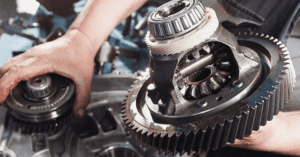Free car repair manuals pdf download

Free auto repair manuals
Free car repair manuals pdf download – Free workshop manuals
The Ultimate Guide to Car Repair Manuals: Empowering DIY Enthusiasts and Professional Mechanics Alike
Introduction:
Car repair manuals are invaluable resources for anyone looking to maintain, repair, or restore their vehicles. Whether you’re a seasoned mechanic or a novice DIY enthusiast, having access to accurate and comprehensive repair manuals can save you time, money, and frustration. In this comprehensive guide, we’ll explore the importance of car repair manuals, how they work, and how they empower individuals to tackle automotive maintenance and repairs with confidence.
Understanding Car Repair Manuals:
Car repair manuals, also known as service manuals or workshop manuals, are comprehensive guides that provide detailed instructions on how to diagnose, repair, and maintain vehicles. These manuals are typically divided into sections that cover specific components, systems, or procedures, such as engine repair, electrical troubleshooting, or brake maintenance.
Car repair manuals are available for virtually every make and model of vehicle, ranging from classic cars to modern hybrids. They are typically produced by automotive manufacturers or third-party publishers and are designed to be used by both professional mechanics and DIY enthusiasts.
Key Features of Car Repair Manuals:
Car repair manuals typically contain a wealth of information and features to help users effectively maintain and repair their vehicles. Some key features include:
- Detailed Procedures: Repair manuals provide step-by-step instructions for performing specific maintenance or repair tasks, including disassembly, inspection, reassembly, and testing procedures.
- Illustrations and Diagrams: Many repair manuals include detailed illustrations, diagrams, and schematics to help users visualize the components and systems being worked on. These visual aids make it easier to understand complex procedures and identify parts.
- Troubleshooting Guides: Repair manuals often include troubleshooting guides to help users diagnose common problems and identify potential causes. These guides typically include lists of symptoms, possible causes, and recommended repair procedures.
- Technical Specifications: Repair manuals contain detailed technical specifications for various components and systems, including torque settings, fluid capacities, and electrical values. These specifications ensure that repairs are performed to the manufacturer’s standards.
- Maintenance Schedules: Many repair manuals include recommended maintenance schedules, which outline the intervals at which various maintenance tasks should be performed. Following these schedules helps prevent premature wear and costly repairs.
How Car Repair Manuals Empower DIY Enthusiasts:
Car repair manuals empower DIY enthusiasts by providing them with the knowledge, confidence, and resources they need to tackle automotive maintenance and repairs on their own. Here’s how:
- Education: Repair manuals serve as educational resources, teaching DIY enthusiasts about the inner workings of their vehicles and how to properly maintain and repair them. By following the instructions in the manual, DIYers can gain valuable knowledge and skills that can be applied to future projects.
- Cost Savings: DIY repairs can save individuals a significant amount of money compared to taking their vehicles to a professional mechanic. Repair manuals provide detailed instructions on how to perform repairs correctly, allowing DIYers to avoid expensive labor costs.
- Flexibility: Repair manuals give DIY enthusiasts the flexibility to work on their vehicles at their own pace and on their own schedule. Whether it’s a weekend project in the garage or a quick repair in the driveway, repair manuals provide the guidance needed to get the job done right.
- Confidence: Repair manuals instill confidence in DIY enthusiasts by providing them with clear, step-by-step instructions for performing repairs. With the manual as their guide, DIYers can approach automotive maintenance and repairs with confidence, knowing that they have the knowledge and resources needed to succeed.
How Car Repair Manuals Benefit Professional Mechanics:
While car repair manuals are commonly used by DIY enthusiasts, they also offer numerous benefits to professional mechanics:
- Reference Material: Repair manuals serve as valuable reference material for professional mechanics, providing them with detailed information on specific vehicle models, systems, and components. Mechanics can consult the manual to refresh their knowledge or troubleshoot complex problems.
- Training Tool: Repair manuals are often used as training tools for apprentice mechanics or as part of ongoing professional development programs. Mechanics can use the manuals to learn new techniques, familiarize themselves with new vehicle models, and stay up-to-date on the latest repair procedures.
- Efficiency: Repair manuals help professional mechanics work more efficiently by providing them with accurate, comprehensive instructions for performing repairs. Mechanics can quickly access the information they need, saving time and minimizing downtime for customers.
- Quality Assurance: By following the procedures outlined in repair manuals, professional mechanics can ensure that repairs are performed to the manufacturer’s specifications. This helps maintain the quality and reliability of the work performed, leading to greater customer satisfaction and loyalty.
Conclusion:
In conclusion, car repair manuals are essential tools for anyone looking to maintain, repair, or restore their vehicles. Whether you’re a seasoned mechanic or a novice DIY enthusiast, having access to accurate and comprehensive repair manuals can make all the difference when it comes to automotive maintenance and repairs. By providing detailed instructions, illustrations, troubleshooting guides, and technical specifications, repair manuals empower individuals to tackle automotive projects with confidence and achieve professional-quality results. Whether you’re changing a spark plug, replacing a timing belt, or rebuilding an engine, a good repair manual is your roadmap to success in the world of automotive repair.
DIY Car Repair
Certainly, performing do-it-yourself (DIY) car repairs can be a cost-effective way to maintain and fix your vehicle. Here are some general steps to consider when attempting car repair DIY:
- Identify the Problem: First, diagnose the issue with your vehicle. Whether it’s a strange noise, a warning light on the dashboard, or a performance problem, you need to pinpoint the problem before you can fix it. Consult your owner’s manual for guidance.
- Gather Tools and Equipment: Make sure you have the necessary tools and equipment for the repair. Common tools include wrenches, screwdrivers, pliers, a jack and jack stands, and a repair manual specific to your vehicle.
- Safety Precautions: Safety is paramount. Always work in a well-ventilated area and use safety equipment like gloves and safety glasses. If you’re lifting the car, use proper jack stands and never rely solely on a jack.
- Research and Preparation: Before starting any repair, research the specific repair procedure for your vehicle. You can find this information in your car’s repair manual or online resources. Make sure you understand the steps involved.
- Disconnect the Battery: If you’re working on electrical components, disconnect the car battery to avoid any electrical shocks.
- Follow Proper Procedures: Carefully follow the steps outlined in your repair manual or online resource. Take your time and be methodical. Avoid taking shortcuts.
- Replace Parts: If you’re replacing parts, ensure that you have the correct replacement parts for your vehicle. Use quality, manufacturer-recommended components.
- Reassembly: As you complete the repair, reassemble the vehicle as it was before. Pay attention to torque specifications for bolts and nuts.
- Test and Verify: After the repair is complete, test the vehicle to ensure the issue has been resolved. Listen for any strange noises, check for warning lights, and take the car for a test drive if necessary.
- Dispose of Old Parts: Dispose of old or damaged parts properly, following environmental regulations.
- Keep Records: Maintain a record of the repairs you’ve performed, including the date, the parts used, and any notes about the process. This can be helpful for future reference.
- Seek Professional Help When Needed: If you encounter a repair that is beyond your skill level or if it involves complex systems (e.g., airbags, transmission, or advanced electronics), it’s often safer and more cost-effective to consult a professional mechanic.
Remember that some repairs may require special tools and equipment, as well as a good understanding of automotive systems. If you’re not confident in your abilities, it’s best to consult with a professional mechanic to ensure the safety and reliability of your vehicle.
Engine Repair – Diesel engine repair services – engine replacement – free workshop manuals – Small Motor Repair – Engine overhaul
HOME
Posts
- Volvo trucks Wiring Diagram (April 16, 2024)
- Tata workshop manual PDF (April 16, 2024)
- Ssangyong workshop manual (April 6, 2024)
- SsangYong Rexton 2001-2012 repair manual (April 6, 2024)
- Smart Fortwo Wiring Diagram (April 3, 2024)
- Saab 9000 wiring diagram (March 29, 2024)
- Rover repair manuals (March 29, 2024)
- Pontiac Service (March 26, 2024)
- Peugeot workshop manuals free (March 26, 2024)
- Opel Insignia Repair Manual 2017 (March 23, 2024)
- Opel Repair Manual (March 23, 2024)
- Maserati Car (March 22, 2024)
- Lotus Car (March 19, 2024)
- Lamborghini Repair Manual (March 19, 2024)
- Lancia Repair Manuals (March 18, 2024)
- Geely Repair Manual (March 18, 2024)
- Ferrari F430 Error Codes DTC (March 14, 2024)
- Ferrari 328 Wiring Diagram GTB GTS (March 14, 2024)
- Ferrari 512 TR Technical Manual (March 14, 2024)
- Ferrari F40 Service Manual (March 14, 2024)
- Ferrari Repair Manual (March 13, 2024)
- Ferrari 308 GTS Quattrovalvole Workshop Manual (March 13, 2024)
- 1981 Datsun Pickup Wiring Diagram (March 11, 2024)
- Datsun On-Do Wiring Diagram (March 11, 2024)
- Datsun Repair Manuals (March 11, 2024)
- Datsun 1000 Repair Manual (March 11, 2024)
- Datsun 410 Service Manual (March 11, 2024)
- Datsun 510 Service Manual PDF (March 11, 2024)
- Daewoo Gentra Spare Parts Catalogue (March 11, 2024)
- Daewoo Tico Service Manual PDF (March 11, 2024)
- Daewoo Matiz Service Manual 2003 (March 11, 2024)
- Daewoo Cielo Service Manual PDF (March 11, 2024)
- Daewoo Error Codes (March 10, 2024)
- Daewoo Leganza Service Manual (March 9, 2024)
- Chrysler OBD2 codes (March 9, 2024)
- Chrysler Minivan 2014 Service Manual (March 9, 2024)
- Chery S18D Indis Service Manual (March 3, 2024)
- Chery Fora A21 Service Manual (March 3, 2024)
- Chery A15 Amulet Service Repair Manual (March 3, 2024)
- Chery Workshop Manual (March 2, 2024)
- Chery Amulet A11 Wiring Diagram (March 2, 2024)
- Chery QQ Service Manual (March 2, 2024)
- Cadillac Repair Manual (February 29, 2024)
- 1960 Cadillac Wiring Diagram (February 29, 2024)
- 2009 Buick Enclave Problems DTC (February 29, 2024)
- 1990 Buick Reatta Wiring Diagram (February 29, 2024)
- 1964 Buick Riviera Wiring Diagram (February 29, 2024)
- Chevrolet Trax Workshop Manual (February 20, 2024)
- 2014 Buick Encore Repair Manual (February 20, 2024)
- Bugatti Spare Parts Catalog (February 20, 2024)
- Rolls Royce Silver Cloud Workshop Manual PDF (February 19, 2024)
- Alfa Romeo GT Veloce 1974 Wiring Diagram (February 18, 2024)
- 1972 Alfa Romeo Berlina Wiring Diagram (February 18, 2024)
- 1969 Alfa Romeo Spider Wiring diagram (February 18, 2024)
- 1967 Alfa Romeo Giulia Sprint GT Wiring Diagram (February 18, 2024)
- Alfa Romeo 33 Workshop Manual (February 14, 2024)
- Alfa Romeo Repair Manual (February 14, 2024)
- Aston Martin DB9 Fault Codes DTC (February 13, 2024)
- Aston Martin DBS Wiring Diagram (February 13, 2024)
- Aston Martin DB7 Workshop Manual (February 13, 2024)
- Aston Martin Repair Manual (February 13, 2024)
- Dodge Caliber Service Manual (February 9, 2024)
- 1991 Acura NSX Service Manual (February 9, 2024)
- Lexus SC300 repair manual PDF (February 2, 2024)
- Isuzu Repair Manual PDF (February 2, 2024)
- Isuzu Trooper workshop manual (February 2, 2024)
- Infiniti QX56 Repair Manual (February 1, 2024)
- 1999 Infiniti QX4 Repair Manual PDF (February 1, 2024)
- Infiniti Q45 repair manual download (February 1, 2024)
- Infiniti M45 2007 repair manual (January 31, 2024)
- 2002 Infiniti I35 repair manual (January 31, 2024)
- Infiniti I30 2001 repair manual (January 31, 2024)
- Infiniti G20 Service Manual (January 31, 2024)
- Infiniti FX35 Repair Manual (January 28, 2024)
- Infiniti G37 Repair Manual PDF (January 28, 2024)
- Infiniti repair manual (January 28, 2024)
- Infiniti G35 Repair Manual PDF (January 28, 2024)
- Honda Prelude repair manual (January 22, 2024)
- 2000 Honda CRV repair manual free download (January 21, 2024)
- 1996 Honda Accord repair manual PDF (January 21, 2024)
- Hummer H3 repair manual (January 20, 2024)
- Honda HRV repair manual (January 20, 2024)
- Nissan Titan repair manual PDF (January 17, 2024)
- Nissan Micra repair manual (January 16, 2024)
- Nissan Cube repair manual (January 16, 2024)
- Nissan Almera repair manual (January 16, 2024)
- Nissan 350Z Repair Manual (January 16, 2024)
- Nissan 300ZX repair manual PDF (January 16, 2024)
- 2004 Lincoln Navigator Engine Repair (January 16, 2024)
- Lincoln repair Manual (January 16, 2024)
- 2008 Lincoln Mark LT repair manual (January 16, 2024)
- 2014 Subaru Impreza WRX STI (January 12, 2024)
- Subaru Legacy Service Manual PDF (January 12, 2024)
- 1.2 l Renault D4F i4 (January 11, 2024)
- Proton Savvy Engine workshop manual (January 11, 2024)
- Proton Satria Neo workshop manual PDF (January 11, 2024)
- Proton workshop manual PDF (January 11, 2024)
- Lotus Elise S2 Service Manual PDF 2001 (January 11, 2024)
- Nissan 300zx z32 (January 9, 2024)
- Nissan skyline R34 (January 9, 2024)
- 2001 Jeep Cherokee XJ repair manual (January 7, 2024)
- 1992 Chevrolet Camaro repair manual (January 6, 2024)
- Mercedes Benz G500 Owners manual (January 6, 2024)
- 2000 Subaru Legacy service manual PDF (January 6, 2024)
- 2004 Chevrolet Corvette engine 5.7L (January 6, 2024)
- 2009 Chevrolet Traverse engine (January 5, 2024)
- 6T70 Transmission Chevrolet Traverse 2009 (January 5, 2024)
- Chevrolet Exhaust Manifold Colorado 2013 (January 5, 2024)
- Chevrolet Silverado 1500 repair manual PDF (January 5, 2024)
- Kia Rio repair manual (December 31, 2023)
- BMW Z4 Roof repair - Sliding/Tilt Roof (December 26, 2023)
- J3 common rail system Diesel 4 cylinders (December 19, 2023)
- Hyundai Atos workshop manual pdf (December 19, 2023)
- Dodge RAM Turbocharger (December 18, 2023)
- Dodge RAM 2006 OBD2 codes (December 17, 2023)
- 2005 Dodge Dakota Repair Manual (December 17, 2023)
- Ford Falcon Automatic Transmission Repair Manual 2003 (December 15, 2023)
- Ford F-150 Transmission Service Manual 2005 (December 14, 2023)
- TATA Nano service manual (December 13, 2023)
- TATA Indigo owners manual and service (December 13, 2023)
- TATA Indica V2 Xeta LPG owner manual and service book (December 13, 2023)
- Mercedes-Benz Repair B200 Repair Manual (December 13, 2023)
- Suzuki JIMNY Service Manual 1998-2018 (December 12, 2023)
- Suzuki Grand Vitara 2005 FT-GT repair manual (December 12, 2023)
- Hydra-Matic Transmission 4L40-E and 5L40-E Repair Manual (December 12, 2023)
- Suzuki Grand Vitara 2011 Workshop Manual (December 10, 2023)
- Suzuki Swift repair manual pdf 2000-2010 (December 10, 2023)
- Cooling System Troubleshooting Guide 2015 (December 9, 2023)
- Suzuki Grand Vitara workshop manual 2000 S416 (December 9, 2023)
- ZF4HP14 Repair Manual (December 9, 2023)
- Renault Lodgy warning lights (December 3, 2023)
- Renault Duster workshop manual PDF 2011-2013 (December 3, 2023)
- Renault Logan service manual PDF 2004 (December 3, 2023)
- Renault Scenic Repair Manual PDF 2003-2009 (December 3, 2023)
- Renault Scenic 1997 workshop manual (December 3, 2023)
- Renault Trafic 2001 transmission repair (December 3, 2023)
- Renault repair manual (December 3, 2023)
- Toyota Camry repair manual PDF xv40 (November 28, 2023)
- 2006 Buick Lucerne CXS engine repair manual (November 26, 2023)
- Toyota Camry Hybrid workshop manual XV50 2012-2017 (November 25, 2023)
- Toyota Highlander repair manual 2008-2013 (November 24, 2023)
- TOYOTA PRIUS REPAIR MANUAL ZVW30 (November 24, 2023)
- Toyota Hilux repair manual 2015 (November 24, 2023)
- Toyota Land Cruiser J70 repair manual (November 24, 2023)
- Volkswagen Wiring Diagrams Passat 2011-2019 (November 24, 2023)
- Volkswagen Body Repair Manual Passat 2019 (November 24, 2023)
- Volvo P1800 Repair Manual (November 23, 2023)
- Volvo S40 V40 Service Repair Manual (November 23, 2023)
- Volvo 940 Repair Manual (November 23, 2023)
- Volvo XC90 repair manual 2011 (November 22, 2023)
- FORD F150 TRUCK TRANSMISSION (November 17, 2023)
- Dodge Ram 1500 tires (November 17, 2023)
- Volkswagen Wheels and Tyres Guide (November 17, 2023)
- Engine maintenance required Toyota Rav4 2019 (November 17, 2023)
- Towing risks (November 17, 2023)
- Battery Toyota Prius hybrid (November 17, 2023)
- Service schedule for Ford Explorer 2014 (November 16, 2023)
- Renault Automatic transmission MB1 MB3 MJ1 MJ3 ML1 (November 16, 2023)
- Chevrolet Camaro (November 1, 2023)
- Automotive additives (October 31, 2023)
- Best car brands (October 24, 2023)
- Electric vehicle EV - HEV (October 13, 2023)
- key ignition vs push button (October 13, 2023)
- Emission control system components (October 12, 2023)
- New car features (October 12, 2023)
- Toyota Land Cruiser 2007 Specifications: Engine, Transmission, Fuel Efficiency, Towing Capacity, and Safety Features (June 22, 2023)
- Specifications and Features of the 2020 Ford F-150 (June 18, 2023)
- The Future of Automotive Technology (June 9, 2023)
- Best truck for towing travel trailer (June 9, 2023)
- Off-roading for dummies (June 9, 2023)
- Cars with most complaints (June 9, 2023)
- Most common car repair problems (June 5, 2023)
- The firing order for the Chevy V8, both the SBC and BBC (June 5, 2023)
- Firing order 6 cylinder engine (June 5, 2023)
- Firing order 8 cylinder engine (June 5, 2023)
- Engine failure rate by brand (June 3, 2023)
- Most engine failure are preventable (June 3, 2023)
- Best wheel cleaner (June 3, 2023)
- Automotive engineering universities (June 2, 2023)
- Trucks and SUVs list (June 2, 2023)
- Best car in USA (June 2, 2023)
- Tesla Model S Plaid 1020hp (June 2, 2023)
- Lotus Evija 2,000hp (June 2, 2023)
- Toyota jz2 engine specs (June 2, 2023)
- Automotive transmission types (June 2, 2023)
- SUPERMATIC TRANSMISSION 6L80-E 6-SPEED AUTOMATIC 650 LB-FT TORQUE (June 2, 2023)
- Ford 10 speed transmission (June 1, 2023)
- Shift into High Gear with S tronic Automatic Transmission (June 1, 2023)
- Kia Sportage Specs 2022 (April 17, 2023)
- Ford Puma specs (April 17, 2023)
- Hyundai Tucson Specs 2021 (April 14, 2023)
- Mini Cooper Specs 2021 (April 13, 2023)
- Ford Fiesta Specs 2022 (April 13, 2023)
- Volkswagen T-Roc specs (April 13, 2023)
- Nissan Juke Specs (April 12, 2023)
- Nissan Qashqai Specs 2021: Engines, Safety Features, and Dimensions (April 11, 2023)
- Dodge firing order (April 7, 2023)
- GMC firing order (April 7, 2023)
- Chevrolet firing order (April 7, 2023)
- JEEP firing order (April 7, 2023)
- Hyundai firing order (April 7, 2023)
- Nissan firing order (April 7, 2023)
- Mazda firing order (April 7, 2023)
- Subaru firing order (April 7, 2023)
- Ford firing order (April 7, 2023)
- Toyota firing order (April 7, 2023)
- Honda CR-V Specs 2021 (April 7, 2023)
- Jeep Grand Cherokee SPECS (April 6, 2023)
- Tesla Model Y SPECS (April 6, 2023)
- Toyota RAV4 SPECS (April 6, 2023)
- TOYOTA TACOMA SPECS 2021 (April 6, 2023)
- GMC SIERRA 1500 SPECS 2021 (April 6, 2023)
- Subaru Crosstrek Specs 2022 (April 5, 2023)
- Honda Accord specs 2021 (April 5, 2023)
- Mazda CX-5 specs 2021 (April 5, 2023)
- Subaru Outback Specs 2021 (April 5, 2023)
- Nissan Altima specs 2022 (April 4, 2023)
- Ford Escape Specs 2022 (April 4, 2023)
- Honda Civic SPECS 2022 (April 4, 2023)
- RAM 1500 SPECS 2022 (April 4, 2023)
- Chevrolet Silverado 1500 SPECS 2022 (April 4, 2023)
- FORD F-150 SPECIFICATIONS 2022 (April 4, 2023)
- Camry hybrid 2007 (March 27, 2023)
- BMW 535XI COOLING SYSTEM (March 12, 2023)
- Hyundai Sonata Body Repair (February 25, 2023)
- Timing Belt Replacement Recommendations (February 11, 2023)
- VAG TIMING TOOL KIT (February 9, 2023)
- Car engine specs (February 6, 2023)
- 2006 Buick Lucerne repair manual free (February 4, 2023)
- Buick Automatic Transmission (February 4, 2023)
- Audi A6 Fuses location (February 4, 2023)
- Audi A6 Fuses (February 4, 2023)
- Audi A6 TFSI knock sensor replacement (February 3, 2023)
- Subaru Legacy Transmission (January 27, 2023)
- Audi Q8 Brakes (January 24, 2023)
- 5.0 l Coyote V8 (January 22, 2023)
- A6GF1 Transmission PDF (January 20, 2023)
- Ford Endeavour wiring (January 20, 2023)
- Ford everest dashboard (January 19, 2023)
- Ford Everest wiring diagram (January 19, 2023)
- 2007 BMW Z4 front bumper (January 16, 2023)
- Tire Pressure Monitoring System (January 9, 2023)
- VW 1.2 TSI FIRING ORDER (January 4, 2023)
- Nissan Qashqai timing chain (December 12, 2022)
- BMW 5 series timing chain (December 12, 2022)
- Chevrolet captiva timing chain (December 8, 2022)
- Subaru legacy timing belt (November 25, 2022)
- SUZUKI SWIFT TIMING CHAIN (November 19, 2022)
- Peugeot HDI (November 18, 2022)
- Audi TFSI Engine - Innovative Technologies for Current and Future Vehicles (November 17, 2022)
- Audi Maintenance (November 17, 2022)
- VW PASSAT repair manual free download (November 17, 2022)
- Volvo XC90 (November 16, 2022)
- BMW Z4 E85 FUEL PUMP (November 16, 2022)
- VW GOLF TIMING CHAIN (November 15, 2022)
- Buick Enclave Repair Manual PDF (November 12, 2022)
- Audi Q7 (November 11, 2022)
- Cadillac Escalade repair manual free download (November 6, 2022)
- Cadillac Escalade (November 6, 2022)
- IVECO DAILY Repair manual (November 6, 2022)
- IVECO DAILY (November 6, 2022)
- Daihatsu Terios repair manual PDF (November 4, 2022)
- Daihatsu repair manual PDF (November 4, 2022)
- Daihatsu Sirion (November 4, 2022)
- Daewoo Cars repair manuals (November 3, 2022)
- Daewoo Matiz Workshop Manual PDF (November 3, 2022)
- Porsche 928 (November 3, 2022)
- Porsche Cayenne (November 3, 2022)
- Porsche Tiptronic (November 3, 2022)
- Porsche turbocharger (November 3, 2022)
- Porsche 996 carrera 4s (November 3, 2022)
- CITROEN DISPATCH (November 2, 2022)
- Citroen C8 repair manual PDF (November 2, 2022)
- CITROEN C5 repair manual PDF download (November 2, 2022)
- Citroen repair manual PDF (November 1, 2022)
- HYUNDAI I30 BODY REPAIR (October 31, 2022)
- HYUNDAI ELANTRA (October 31, 2022)
- Hyundai Getz repair manual (October 31, 2022)
- Chrysler 300c repair manual (October 31, 2022)
- CHRYSLER VOYAGER repair manual free (October 30, 2022)
- PT CRUISER (October 30, 2022)
- Lexus LS400 XF10 XF20 (October 30, 2022)
- RX 450 H Lexus Hybrid Drive (October 30, 2022)
- CHEVROLET SAIL repair manual (October 29, 2022)
- Audi 8 Speed Transmission 0BK AWD (October 24, 2022)
- BMW X3 E83 Repair Manual PDF (October 22, 2022)
- BMW X1 E84 Workshop Manual (October 22, 2022)
- SUBARU CODES OBD2 LIST (October 22, 2022)
- SUBARU H4SO engine repair (October 22, 2022)
- H4DOTC SUBARU Engine (October 22, 2022)
- LAND ROVER ECU (October 21, 2022)
- MAZDA 2007 MIATA SPORT MX5 (October 21, 2022)
- MAZDA RX-8 REPAIR MANUAL (October 21, 2022)
- MAZDA 3 TIMING CHAIN (October 20, 2022)
- LAMBORGHINI MURCIELAGO (October 14, 2022)
- MAZDA SELECTOR LEVER (October 7, 2022)
- KIA Shift Lock release (October 7, 2022)
- Volkswagen selector lever (October 7, 2022)
- Toyota shift lock (October 6, 2022)
- Toyota oil change (October 4, 2022)
- Honda oil change (October 4, 2022)
- Service and maintenance (October 4, 2022)
- Suzuki firing order (September 23, 2022)
- Toyota camry firing order (September 23, 2022)
- 2000 Toyota camry 2.2 l firing order (September 23, 2022)
- TOYOTA 3.0 FIRING ORDER (September 23, 2022)
- Toyota 22RE firing order (September 23, 2022)
- Toyota 3.4 firing order (September 22, 2022)
- PONTIAC MONTANA FIRING ORDER 2005 (September 19, 2022)
- NISSAN 350Z FIRING ORDER 2006 (September 19, 2022)
- NISSAN ALTIMA FIRING ORDER 2006 (September 19, 2022)
- NISSAN FRONTIER FIRING ORDER 2005 (September 19, 2022)
- NISSAN PATHFINDER FIRING ORDER (September 16, 2022)
- Nissan Pickup Firing Order (September 16, 2022)
- Mazda 3 firing order (September 15, 2022)
- FAULT CODES LIST (September 14, 2022)
- OBD CODES LIST C0000-C3000 (September 13, 2022)
- OBD2 CODES AND FIXES (September 13, 2022)
- OBD2 FAULT CODES P2000 (September 13, 2022)
- Obd2 Codes List P0000 (September 12, 2022)
- Mazda 3.0 firing order (September 1, 2022)
- 1999 Mazda protege firing order (September 1, 2022)
- 2000 Lexus RX firing order (August 23, 2022)
- 2005 KIA Optima firing order (August 23, 2022)
- 1994 Isuzu trooper firing order (August 22, 2022)
- GMC S10 FIRING ORDER (August 21, 2022)
- GMC G1500 firing order (August 20, 2022)
- Buick firing order (August 20, 2022)
- Cadillac firing order (August 20, 2022)
- GM 3.4 firing order (August 19, 2022)
- GM firing order (August 19, 2022)
- GM firing order 5.7 (August 19, 2022)
- Hyundai Santa fee firing order (August 19, 2022)
- hyundai firing order 2006 2008 (July 27, 2022)
- 1999 Honda CRV firing order (July 27, 2022)
- Honda CRV firing order (July 21, 2022)
- Honda Del Sol firing order (July 21, 2022)
- Honda Civic firing order (July 20, 2022)
- Honda accord firing order (July 20, 2022)
- Dodge RAM firing order (July 20, 2022)
- Chevrolet S10 firing order (July 19, 2022)
- Chevrolet spark firing order (July 19, 2022)
- 2006 chevrolet silverado firing order (July 19, 2022)
- Chevrolet v6 firing order (July 19, 2022)
- Chevrolet firing order v8 (July 19, 2022)
- Chevrolet firing order 2005 (July 19, 2022)
- Chevy 1993 firing order (July 19, 2022)
- CADILLAC 1989 FIRING ORDER (July 19, 2022)
- CADILLAC FIRING ORDER (July 19, 2022)
- Kia repair manuals (July 17, 2022)
- Car repair PDF (July 16, 2022)
- 2jz-gte engine manual pdf (June 27, 2022)
- 2jz - GTE toyota supra timing belt (June 27, 2022)
- Honda Civic timing belt 2000 (June 22, 2022)
- Honda CRV timing belt replacement 1997-2000 (June 22, 2022)
- FORD MUSTANG Timing Chain Replacement (June 22, 2022)
- mustang timing chain 2003 (June 21, 2022)
- Ford Explorer timing chain 2001 (June 21, 2022)
- TIMING BELT AND TIMING CHAIN (June 21, 2022)
- KIA OPTIMA REPAIR MANUAL (June 9, 2022)
- Kia Sportage 2012 workshop manual (June 9, 2022)
- Kia Sorento Repair Manual free download 2015-2018 (June 9, 2022)
- VOLKSWAGEN PASSAT Workshop manual 2011- 2019 SE (May 28, 2022)
- BMW X2 REPAIR MANUAL (April 29, 2022)
- Volkswagen Oil change (April 26, 2022)
- VW Automatic transmission DSG7, S-TRONIC (April 25, 2022)
- Audi Q5 Repair manual (8R,83B) 2008-2016 (April 23, 2022)
Pages
- Terms and Conditions (December 18, 2023)
- TATA owner manual (December 13, 2023)
- Suzuki Repair Manual (December 9, 2023)
- Transmission Repair Manual (November 13, 2023)
- Rims and tires (November 5, 2023)
- Buick repair manuals Free (November 12, 2022)
- Opt-out preferences (November 9, 2022)
- Shift lock in automatic car (October 7, 2022)
- Renault oil change (October 4, 2022)
- Obd2 Codes (September 13, 2022)
- Free factory auto repair manuals PDF (September 1, 2022)
- Firing order (August 5, 2022)
- About us (March 19, 2022)
- BMW repair manuals (October 21, 2021)
- History of Automotive Industry (October 20, 2021)
- Camping World Towing Guide (October 13, 2021)
- Free Chrysler repair manuals online (October 12, 2021)
- VW repair manual (October 11, 2021)
- LEXUS repair manual pdf (June 29, 2021)
- Acura Auto Repair (January 19, 2021)
- Hybrid and electric cars, EV and HV. (December 3, 2020)
- Rims and Tires Basic information (November 2, 2020)
- Chevrolet repair manual (April 27, 2020)
- How to test alternator (January 7, 2020)
- Jeep repair manual (December 30, 2019)
- Mazda repair manual (December 30, 2019)
- Subaru repair manual (December 30, 2019)
- DODGE Repair Manual Free Download (December 30, 2019)
- Porsche Workshop Manual (December 30, 2019)
- ZF4HP22 PEUGEOT AUTOMATIC GEARBOX (December 30, 2019)
- Honda repair manual (December 30, 2019)
- Land Rover Repair Manual (December 30, 2019)
- Ford Auto Repair (December 30, 2019)
- Toyota repair manual PDF free download (December 30, 2019)
- Nissan repair manual (December 30, 2019)
- BMW Engine codes (December 29, 2019)
- Audi Workshop Manual free download (December 21, 2019)
- Volvo Repair Manual (December 8, 2019)
- JAGUAR Repair Manual (December 8, 2019)
- Contact us (December 7, 2019)
- Privacy Policy (December 7, 2019)
- Hyundai Repair Manual (December 4, 2019)
- Mitsubishi repair manuals (December 3, 2019)
- Mercedes Benz repair manual (December 3, 2019)
- Tesla owners manual (December 2, 2019)
- Land Rover owners manual (December 1, 2019)
- JAGUAR OWNERS MANUAL (December 1, 2019)
- Subaru owners manual (December 1, 2019)
- Skoda owners manual (December 1, 2019)
- Fiat owners manual (December 1, 2019)
- Lexus owners manual (December 1, 2019)
- Renault owners manual (December 1, 2019)
- Mitsubishi owners manual (November 30, 2019)
- Porsche owners manual pdf (November 30, 2019)
- Suzuki owners manual (November 30, 2019)
- Peugeot owners manual (November 30, 2019)
- Citroen owners manual PDF (November 30, 2019)
- Seat owners manual (November 30, 2019)
- GMC OWNERS MANUAL (November 30, 2019)
- BMW owners manual (November 30, 2019)
- Audi owners manual (November 30, 2019)
- Jeep owners manual (November 29, 2019)
- Kia owners manual (November 29, 2019)
- HYUNDAI OWNERS MANUAL (November 29, 2019)
- Mini owners manual (November 29, 2019)
- Ford owners manual (November 28, 2019)
- Honda owners manual (November 28, 2019)
- Dodge owner manual (November 28, 2019)
- Toyota owners manual (November 28, 2019)
- Mazda owners manual (November 28, 2019)
- Opel owners manual (November 28, 2019)
- Mercedes owners manual (November 28, 2019)
- Volkswagen owners manual (November 28, 2019)
- Car care (November 27, 2019)
- Nissan owners manual (November 27, 2019)
- Chevrolet owners manual (November 27, 2019)
- Car manuals free download, technical information. (November 26, 2019)
- Free car repair manuals pdf download (October 27, 2019)

































































